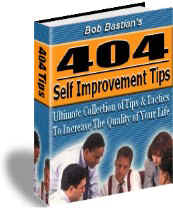3 Secrets To Understanding What Music Is Made Of
By: Duane Shinn
Its no secret that virtually everyone loves music in some form or other. After all, it is the universal language, and we all participate in it to some degree from the cradle to the grave. It starts with our Mothers lullaby, ends with our funeral song, with a zillion other stops along the way.
But what is music, anyway? What makes it tick? We all love some form of it and dislike other forms of it.
The country-western fan may not like jazz, but he or she sure loves the sound of pickin & grinnin. And the jazz fan feels just the opposite.
And thats as it should be. If we all liked the same kind of music, there just wouldnt be the variety that is available to us now. We can choose from musical styles ranging from heavy classical and opera to rock to childrens songs to Broadway musicals to gospel music to the blues.
Each has its place, and each seems on the surface to be drastically different than another form of music. The key word is on the surface. But beneath the surface of all music is a commonality that is organic to all forms and styles of music.
So what does all music have in common?
At least 3 things sometimes more, but never less:
1.Melody
2.Rhythm
3.Harmony
The melody is the part of a song or composition that you whistle or hum in other words, the tune of the song. In one sense, it is the most visible of the 3 elements, because melody is what identifies a song. Without melody, it would be difficult to even conceive of a song or piece.
In musical notation, the melody is almost always written in the treble clef also known as the treble staff. It consists of a horizontal line of notes that move up and down on the clef as the tune moves higher or lower.
Rhythm is the beat the swing the throb of the music. It happens in repeating patterns, depending upon the type of music. It is like a horizontal line of beats which occur at regular or semi-regular intervals. A waltz, for example, basically consists of a heavy beat followed by two lighter beats. So we say that a waltz is in triple meter one strong beat followed by two weak beats, then repeated.
A march, on the other hand, generally consists of a heavy beat followed by a light beat, then another heavy beat followed by another light beat. (Im simplifying, of course there are many varieties) So a march is in duple meter as you might expect since we have two feet and we march in left-right-left-right patterns.
All rhythms are some combination of triple meter and/or duple meter, and the possibilities are endless from boogie to R&B to mambos and sambas and bossa novas and.on and on.
Harmony, the 3rd aspect of music, is the musical background of a song the chords, or intervals behind the melody. Without harmony, a song sounds empty like a vocalist singing without an accompanist or accapella. Music doesnt HAVE to have harmony to function, but in actual practice it almost always does, even if it is just the interplay of two melodies, as in counterpoint.
You could spend a lifetime learning all the nuances of music, but it its most basic form, it is these 3 elements combined together; melody, rhythm, and harmony.
P.S. After all that Serious stuff - You deserve a Break!


In this exciting game you have to become the tower builder. Your main responsibility is to build a tower as more balanced and stable as you can. And your main problem is lack of materials. Sometimes provider brings you absolutely useless things. But stability is not only thing you need.
About the Author
Duane Shinn is the author of the book-CD-DVD course titled "How To Dress Up Naked Music On The Piano!" which is used by pianists around the world and can be found at http://www.pianoplaying.com
| 






